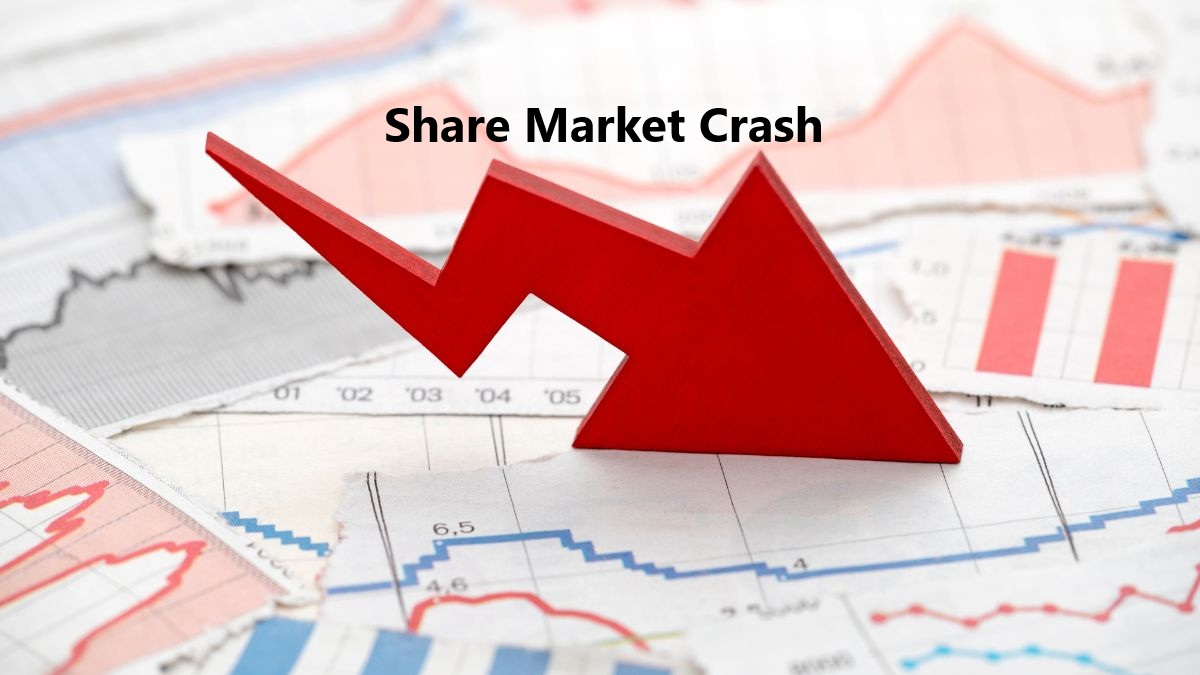A stock market crash is a sudden and severe decline in the prices of stocks across a significant section of the market, often resulting in widespread financial panic and economic disruption. These crashes can be triggered by various factors such as economic downturns, political instability, inflation fears, overvalued stock prices, or unexpected global events. When investor confidence is shaken, panic selling begins, causing a rapid fall in market indices like the Dow Jones, NASDAQ, or Nifty.
Historically, stock market crashes have had far-reaching effects—not just on financial institutions and investors, but also on businesses, employment, and the economy as a whole. Iconic examples include the Wall Street Crash of 1929, which led to the Great Depression, the Black Monday crash of 1987, and the 2008 global financial crisis triggered by the collapse of major banks and financial institutions.
In today’s interconnected world, a market crash in one region can ripple across global economies due to high levels of financial interdependence. Understanding the causes, impact, and recovery strategies associated with market crashes is essential not only for investors and financial professionals but also for the general public, as the effects often reach far beyond stock exchanges and into everyday life.
Stock Market Crash
Global stock markets experienced a significant downturn in early April 2025, primarily triggered by the announcement and implementation of widespread tariffs by U.S. President Donald Trump. This development has led to substantial losses across major indices worldwide and heightened fears of a global economic slowdown.
Market Performance Overview During Stock Market Crash
-
United States: The S&P 500 has entered bear market territory, with approximately $9.5 trillion in value erased since Thursday. The Nasdaq Composite has also declined by over 20% from its peak, signaling a bear market.
-
Asia: Hong Kong’s Hang Seng Index plunged over 13%, marking its worst day since 1997. Other major indices in China, Japan, South Korea, and India dropped between 4% and nearly 8%.
-
Europe: Germany’s DAX fell 9.4%, while the Stoxx 600 declined by 5.3%. Key sectors, including defense and banking, experienced significant losses.
Causes of the Stock Market Crash:
-
Implementation of Tariffs: President Trump’s announcement of new “reciprocal” tariffs has escalated trade tensions, prompting immediate retaliatory measures from countries such as China. This has led to increased uncertainty and volatility in global markets.
-
Bursting of the AI Bubble: Overhyped expectations and aggressive investments in artificial intelligence, particularly by U.S. tech giants, were undermined by the emergence of low-cost competitors like China’s DeepSeek and strategic shifts by companies such as Microsoft.
-
Political Developments: The implementation of disruptive fiscal policies by Treasury Secretary Scott Bessent through the Department of Economic Efficiency (DOGE) has pushed the U.S. into recession, further exacerbating market instability.
Global Response:
-
China: Beijing has labeled Trump’s actions as “economic bullying” and announced a 34% duty on U.S. goods, effective April 10.
-
European Union: The EU plans to start collecting retaliatory duties on certain U.S. goods, while expressing readiness to negotiate a “zero for zero” deal with the U.S. administration.
Investor Sentiment:
The rapid market decline has led to heightened volatility and comparisons to historic crashes, such as those in 1987 and during the 2008 financial crisis. Analysts are concerned about the potential for a prolonged economic downturn, with some fearing a recession.
Conclusion:
The confluence of aggressive trade policies, the bursting of speculative investment bubbles, and disruptive fiscal measures has led to a sharp decline in global stock markets. The situation remains fluid, with markets reacting swiftly to policy announcements and geopolitical developments. Investors are advised to exercise caution and stay informed as events unfold.

